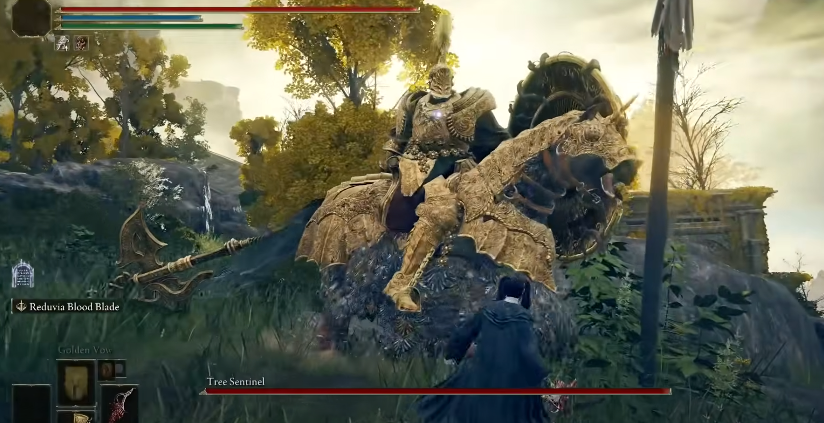The Lands Between in Elden Ring present a world where divine beings and mortals frequently collide—sometimes as allies, more often as enemies. This complex web of relationships fuels the game’s mysterious atmosphere and dark narrative. As players explore this haunting landscape, Elden Ring Runes play a central role, representing both power and currency in a realm shaped by gods’ ambitions and human desperation. Runes are not only essential for character progression but also symbolize the broader struggle for influence between mortals and divine entities.
Let’s explore four compelling storylines that highlight how the destinies of gods and mortals intertwine in Elden Ring, each revealing more about the game’s rich mythos and emotional weight.
1. Marika and Radagon: The Duality of Divinity
Queen Marika the Eternal is one of the most enigmatic figures in the game, serving as both a revered deity and a catalyst for the game’s central conflict. Her union with Radagon, who is later revealed to be a part of her, blurs the lines between godhood and identity. Together, they represent the contradictions of divine rule—righteous yet flawed, united yet fragmented. Their story is essential to understanding the foundations of the Golden Order and the events that led to the Shattering.
2. Ranni the Witch and the Path of Rebellion
Ranni’s story introduces a rare divergence from the divine status quo. As a demi-god who rejects the Greater Will, she becomes a symbol of mortal agency against divine authority. Her decision to steal the Rune of Death and slay her own flesh challenges the notion that the gods in Elden Ring are infallible. This storyline offers players a chance to side with a character who seeks to dismantle celestial control in favor of a new, potentially freer order.
3. The Frenzied Flame and the Madness of Chaos
The Three Fingers and the Frenzied Flame represent a form of divine madness that preys on vulnerable mortals. Characters like Hyetta, who willingly embrace the Flame, show how mortals can be seduced by the promise of ultimate release—even at the cost of self-destruction. This relationship underscores the game’s darker philosophical themes, where mortals caught in existential dread may turn to radical forms of salvation offered by divine forces that care little for order or reason.
4. Godrick the Grafted and the Perverse Ambition of Power
Godrick is a grotesque representation of mortal obsession with divine power. A distant descendant of the Erdtree’s line, he forcibly grafts limbs from other beings to empower himself. His pursuit of god-like strength is both pathetic and horrifying. Godrick’s storyline exemplifies the corruption that occurs when mortals attempt to force their way into the divine sphere rather than earn their place through worth or wisdom.
As players progress through these storylines, acquiring strength and making choices that shape the fate of the Lands Between, they’ll also find themselves dependent on items like Rune Arcs and Runes. For those wondering where to buy rune arcs Elden Ring, the game offers multiple paths: they can be purchased from certain merchants like Twin Maiden Husks in Roundtable Hold or found in late-game regions like Leyndell or Mountaintops of the Giants. These items reflect the themes of the game—runes grant power, and arcs activate Great Rune blessings, tying back into the core idea of divine influence over mortal potential.
Ultimately, Elden Ring doesn’t draw a clear line between gods and mortals. Instead, it presents a world where mortals can ascend—or fall—through their actions, choices, and willingness to confront or cooperate with divine powers. The interplay between godly will and human desire is what makes the game’s story so compelling. By exploring these nuanced relationships, players can better appreciate the game’s lore and the philosophical questions it raises about power, identity, and destiny.

